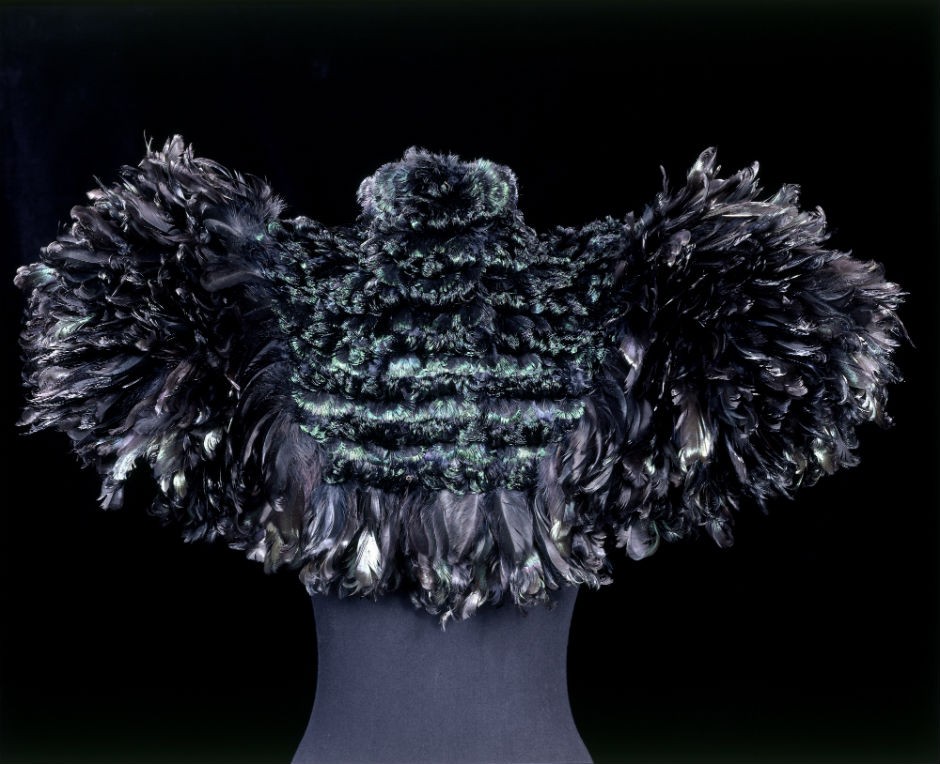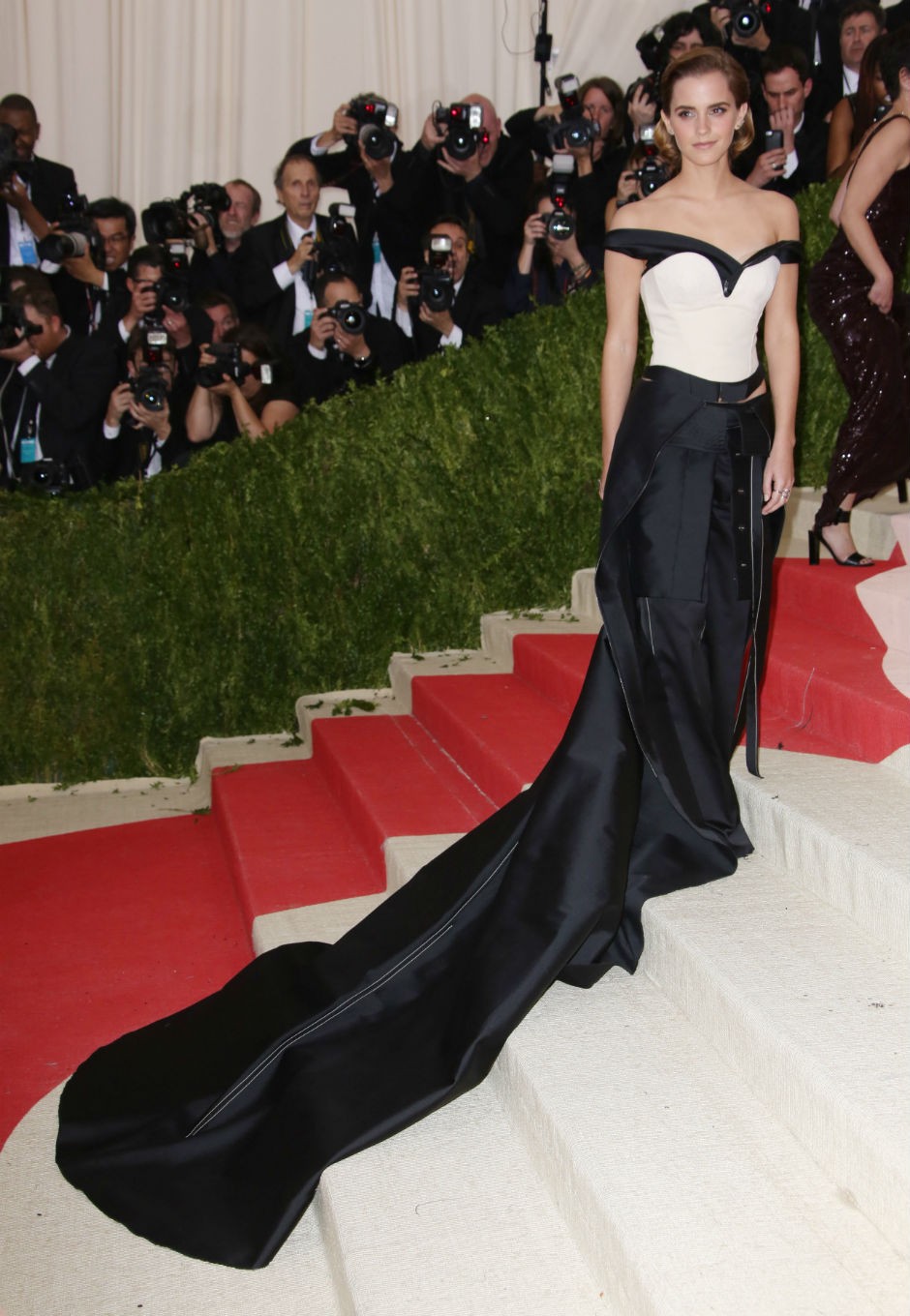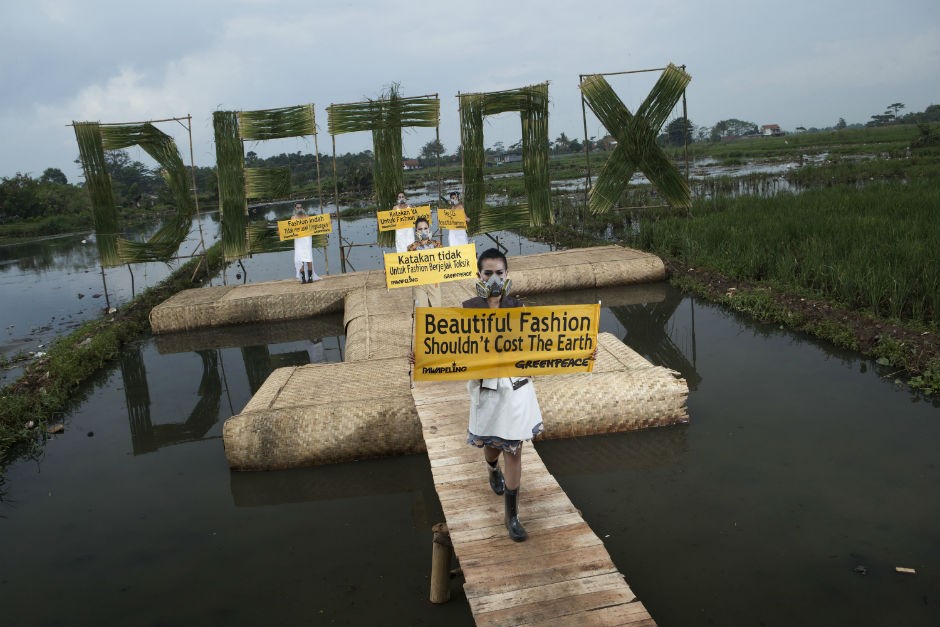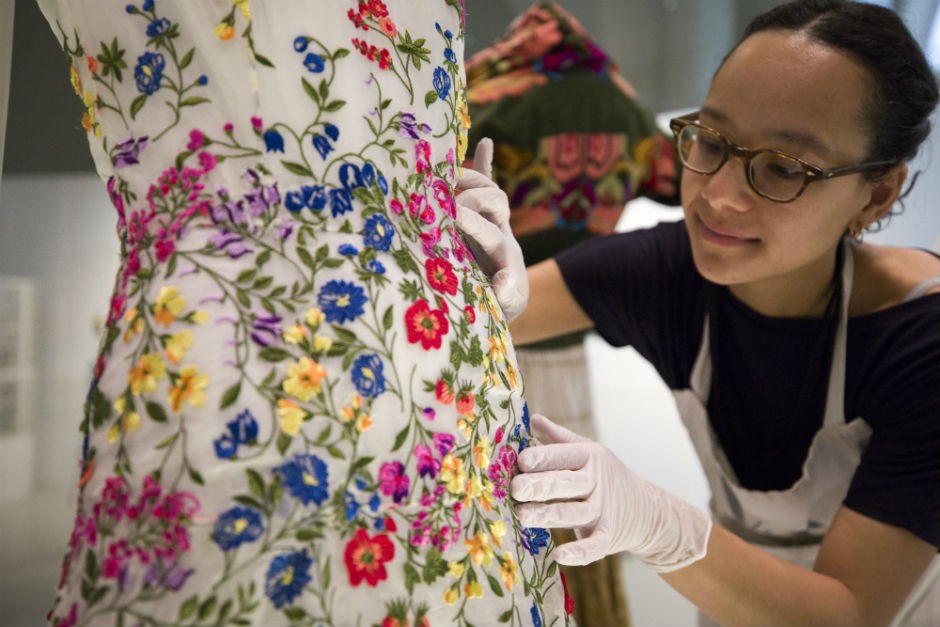Nikola Stepić works in the fields of Film Studies, English and Art History. His current research deals with the city as both a readable interface of desire and sexuality, and as a set of technologies that contribute to the formation of sexual identity. Nikola has published and presented widely on his interests in gender and sexuality studies, material cultures of masculinity, popular culture, porn studies and HIV/AIDS. His work can be read in Angelaki Journal of the Theoretical Humanities, the European Journal of American Studies, The Journal of Religion and Culture and others. An international student from Serbia, he resides in Montreal.
Blog post
How to look at fashion
 Cape of curled cockerel feathers, Auguste Champot, France, ca. 1895. © Victoria and Albert Museum, London
Cape of curled cockerel feathers, Auguste Champot, France, ca. 1895. © Victoria and Albert Museum, London
The most valuable thing about working towards a PhD in Humanities is the encouragement to think across disciplines. While cinema, and specifically queer cinema, is always at the forefront of my research, I also study in the fields of literature and art history.
It was under the banner of art history that I first found myself studying fashion, and I was delighted when the field of fashion studies gave me a roadmap for thinking about gender and sexuality as visual and economic categories. Having recently passed a comprehensive exam in the field, I often return to fashion theory in order to make sense of the world around me.
All this from a guy who recently had to turn to a YouTube tutorial in order to sew a button. So what exactly does it mean when people study fashion?
According to theorist Joanne Entwistle, to study fashion means to think about it in multiple distinct ways. Firstly, fashion is looked at as a performative category, something that would be studied in cultural studies, sociology, costuming and other similar fields. In this sense, the study of fashion is more abstract, and may invite questions that have to do with such social categories as race, gender and sexuality.
For example, the question of cultural appropriation that raises its head at the Met Gala each year, whether the theme is China: Through the Looking Glass or Heavenly Bodies: Fashion and the Catholic Imagination, would generally fall in the domain of what might be called the performative aspect of fashion — as an attempt to trace a particular concept or aesthetic through the practice of wearing clothes.
 Calvin Klein Green Carpet Challenge dress worn by Emma Watson to the MET Gala 2016. Photo by Dimitrios Kambouris / Getty Images. Courtesy of Victoria & Albert Museum, London
Calvin Klein Green Carpet Challenge dress worn by Emma Watson to the MET Gala 2016. Photo by Dimitrios Kambouris / Getty Images. Courtesy of Victoria & Albert Museum, London
The performative aspect of fashion is something that is identity-making, and thus of special value for marginalized people. In his exceptional historiography of gay men’s dress titled Don We Now Our Gay Apparel, Shaun Cole writes on the evolving intersections of sexuality and fashion and claims that fashion has signaled same-sex desire since as early as the 17th-century.
Moreover, fashion allows people to not only showcase their difference, but in fact be different. As Entwistle writes in her study The Fashioned Body, the emergent public life in 18th-century urban centers allowed people to use fashion to literally become somebody — “whether people were in fact what they wore was less important than their desire to wear something recognizable.”
It’s no wonder that popular literature of the 18th- and 19th-century focused so much on appearances as masks that needed to be seen through — the democratization of dress brought with it distrust, and even today people who fail to abide by their environment’s sartorial conventions are regarded with suspicion, if not outright hostility.
The other stream in fashion studies — one that, according to Entwistle, often falls by the wayside — deals with the production and distribution of clothes. The relative lack of attention paid to these aspects of the fashion industry is made all the more apparent when it becomes the focus of conversation, as was the case at London’s Victoria and Albert Museum this year when one of the world’s greatest resources on fashion and design unveiled the exhibition Fashioned from Nature.
Edwina Ehrman, senior exhibition curator, recognizes this dual understanding of fashion, which we relish in “for its novelty, variety and creativity,” while at the same time “fashion’s demands threaten the environment and endanger flora, fauna and human communities” (from the exhibition catalogue).
The exhibition outlines the development of the very industry of fashion from the 17th-century onward, and focuses specifically on its impact on the natural world — from 18th-century whale fishing to current issues surrounding climate change and depleting natural resources.
 Caption: Greenpeace Detox Catwalk in Bandung. © Greenpeace / Hati Kecil Visuals. Courtesy of Victoria and Albert Museum, London
Caption: Greenpeace Detox Catwalk in Bandung. © Greenpeace / Hati Kecil Visuals. Courtesy of Victoria and Albert Museum, London
As one moves through the exhibition, provocative labels point out the real cost and complex histories of fashion objects, from 18th-century hats, fans and canes made of materials such as ivory, turtle shell and sealskin (a result of practices that made various species endangered) to fascinating historic responses to the toll fashion has taken on nature.
For example, the exhibit outlines how already in the 18th-century, philosopher Jeremy Bentham argued that animals should enjoy legal protection; in the 19th-century, British women were spearheading different initiatives regarding the preservation of land and animals, particularly those suffering from fur and feather trades.
The part of the exhibition dedicated to the late 20th- and 21st-centuries historicizes efforts like these even more explicitly. Alongside sustainable fashion pieces by the likes of Vivienne Westwood and actor-turned-designer John Malkovich, one of the centerpieces of the exhibition is the Calvin Klein dress worn by Emma Watson to the 2016 Met Gala, made entirely out of post-consumer materials such as plastic bottles.
As Watson brilliantly puts it in the Foreword to the exhibition catalogue, “[the] threads of this dress were woven in a reinvented tale of our consumption.”
My hope with this blog post was to provide a sense of the different things one might be referring to when they say they study fashion — and still, there is so much to say. For example, a recent V&A exhibition titled Balenciaga, Master of Couture can currently be seen at Montreal’s McCord Museum in what is the exhibition’s North American premiere.
It is a fantastic outlook on fashion which does not merely chart the life of couturier Cristóbal Balenciaga, but uses around 80 garments to pinpoint the changing craftsmanship and use of fabrics, positioning the designer as a kind of fashion architect, and his dresses as interfaces of late 20th-century modernity.
While oftentimes dismissed as a frivolous or surface-level interest, any fashion student would quickly point out that the very word stems from the Latin facere, which means to “make” or “give shape” to something. It is not only the beautiful thing itself, but the social and cultural processes that conspire for the thing to take shape, that fashion can communicate to those who know how to look.
And if you’re still on the fence, perhaps I ought to simply let Meryl Streep explain it instead. That’s all.
 Caption: Behind the Scenes for Balenciaga Shaping Fashion exhibition in the Conservation Studios. © Victoria and Albert Museum, London
Caption: Behind the Scenes for Balenciaga Shaping Fashion exhibition in the Conservation Studios. © Victoria and Albert Museum, London
About the author


